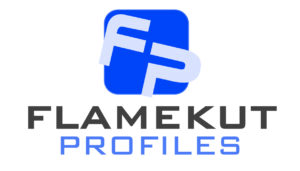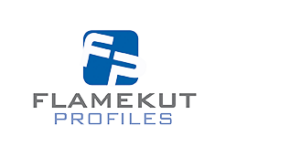How does laser cutting work?
In today’s fast-paced world, precision and efficiency are key factors in manufacturing, design, and various industrial processes. Laser cutting, a technology that has rapidly gained prominence in recent decades, epitomises this need for precision and efficiency. But how does laser cutting work? In this blog post, we’ll take a deep dive into the fascinating world of laser cutting, exploring its principles, applications, and advantages.
The Basics of Laser Cutting
Laser stands for “Light Amplification by Stimulated Emission of Radiation.” It’s not just a fancy acronym; it’s a fundamental concept at the heart of laser cutting. At its core, laser cutting is a subtractive manufacturing process that employs a highly focused laser beam to remove material from a workpiece, leaving behind intricate and precise cuts.
The Laser Generation
The process begins with the generation of the laser beam itself. This starts in the laser resonator, which houses a medium (like a gas mixture, solid-state crystal, or semiconductor) that is stimulated to emit photons when subjected to an energy source. These photons are confined and amplified within the resonator, creating a powerful, coherent, and tightly focused beam of light.
Beam Delivery
Once the laser beam is generated, it needs to be precisely directed toward the workpiece. This is where beam delivery systems come into play. Mirrors and lenses within these systems are used to guide and focus the laser beam, ensuring it remains highly concentrated and can be directed with pinpoint accuracy.
Material Interaction
The laser beam, now focused to a tiny, intense spot, is directed onto the material to be cut. When the beam contacts the material’s surface, its energy is rapidly absorbed, causing the material to heat up. Different materials respond differently to this thermal energy, but in general, they will either melt, vaporise, or be blown away as a result of the intense heat.
Cutting and Kerf
As the material undergoes these transformations, the laser beam moves along a predefined path, which outlines the desired shape of the cut. This path is precisely controlled by computer-aided design (CAD) and computer-aided manufacturing (CAM) software. The width of the cut created by the laser beam is referred to as the “kerf.” It’s worth noting that laser cutting typically generates a narrow kerf, making it a highly efficient cutting method, especially for intricate designs.
Types of Lasers Used in Laser Cutting
The type of laser used in laser cutting can vary depending on the material being processed and the desired results. Here are three common types of lasers used in laser cutting:
1. CO2 Lasers
Carbon dioxide (CO2) lasers are widely used in laser cutting due to their versatility. They are particularly effective at cutting non-metallic materials like wood, acrylic, plastics, and textiles. CO2 lasers operate at a wavelength of 10.6 micrometers, which is readily absorbed by many organic materials, making them ideal for such applications.
2. Fibre Lasers
Fibre lasers have gained popularity for their exceptional performance in cutting various metals, including stainless steel, aluminium, and brass. These lasers use optical fibres to deliver the laser beam, and they operate at a wavelength of around 1 micrometer. Fibre lasers are known for their high energy efficiency and precision when working with metals.
3. Nd:YAG Lasers
Neodymium-doped yttrium aluminium garnet (Nd:YAG) lasers are another option for metal cutting applications. These solid-state lasers produce a beam with a wavelength of around 1.06 micrometers and are particularly effective for cutting thick or reflective materials.
The choice of laser type depends on the specific requirements of the cutting application, including material type, thickness, and desired cut quality.
Applications of Laser Cutting
Laser cutting has found a wide range of applications across various industries due to its precision and versatility. Here are some notable applications:
In industrial manufacturing, laser cutting is used for fabricating metal components used in machinery, automotive, aerospace, and electronics. Its ability to create intricate shapes with minimal waste makes it a preferred method for producing complex parts.
Architectural firms and sign makers use laser cutting to create intricate designs in metal, wood, acrylic, and other materials. This technology allows for precise detailing in decorative elements, signage, and building components.
Laser cutting is integral to the manufacturing of medical devices, such as stents and surgical instruments. The precision and non-contact nature of the process make it ideal for working with delicate medical materials.
Laser cutting is used in the textile and apparel industry to precisely cut fabrics and create intricate patterns without fraying the edges. This technology improves the efficiency of garment production and reduces material waste.
In the electronics industry, laser cutting is employed to create micro-sized components with high precision. It allows for the production of intricate circuit boards and microchips.
Advantages of Laser Cutting
Now that we’ve explored how laser cutting works and where it’s used, let’s delve into some of the key advantages of this technology:
Laser cutting offers unparalleled precision, allowing for the creation of intricate and complex designs with tight tolerances. This precision minimises the need for secondary finishing processes.
Laser cutting is a fast and efficient process. The laser beam can move rapidly, and the cutting process itself is quick, making it suitable for high-volume production.
Laser cutting is versatile and can be used on a wide range of materials, including metals, plastics, ceramics, and organic materials like wood and fabric.
The narrow kerf generated by laser cutting results in minimal material waste, making it an environmentally friendly option. Additionally, the non-contact nature of the process reduces the risk of material contamination.
Laser cutting systems can be integrated into automated manufacturing processes, enhancing productivity and consistency.
Challenges and Considerations
While laser cutting offers numerous advantages, there are also some challenges and considerations to keep in mind:
The thickness of the material being cut can impact the speed and efficiency of the process. Thicker materials may require more power and slower cutting speeds.
Not all materials are suitable for laser cutting. Some materials may emit toxic fumes when cut, while others may have reflective properties that can damage the laser system.
Laser cutting systems require regular maintenance to ensure optimal performance. This includes cleaning optics, aligning mirrors, and replacing worn components.
The upfront cost of acquiring and installing a laser cutting system can be significant. However, the long-term benefits in terms of precision and efficiency often outweigh the initial investment.
Conclusion
Laser cutting is a remarkable technology that has revolutionised manufacturing and design processes across various industries. Its ability to deliver precision, speed, and versatility has made it an indispensable tool for creating intricate and high-quality products. Understanding how laser cutting works and its numerous applications can help businesses and individuals harness the power of this technology to bring their ideas to life with precision and efficiency. Whether you’re in the automotive industry, crafting intricate jewellery, or designing cutting-edge medical devices

